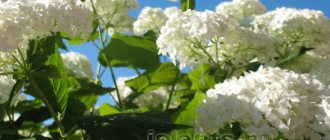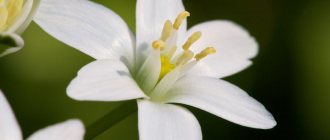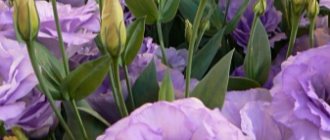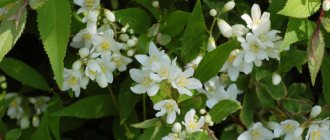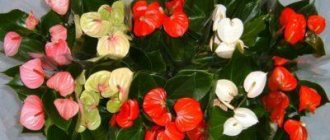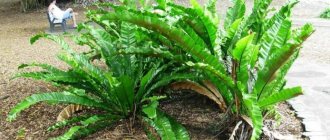Cryptomeria is an evergreen coniferous tree from the Cypress family.
The genus is represented by only one species – Cryptomeria japonica, which is endemic to Japan, where it is known as “sugi”. In Western countries, the plant received a second name - Japanese cedar.
Under natural growing conditions, the tree can reach a height of 60 meters and looks like a cypress. This coniferous plant has fibrous reddish-brown bark that peels off in long strips and linear-subulate, light-colored leaves that become stiff with age.
Botanical properties of cryptomeria
- In most varieties, the crown has the shape of a pyramid, the needles are bluish-green, and in winter they can change color to a darker one.
- The height of the trunk varies from 1.5 to 50 meters, the crown is usually dense, narrowed from the sides.
- The bark is brown with shades of red, with pronounced fibers.
- The leaves are spiral-shaped, greenish, slightly curved at the base.
- The cones are spherical and can reach 2-3 centimeters in diameter.
- The wood is light, slightly rotting, but very soft. It is because of this factor that it is not used in any area other than decoration.
Garden forms
There are more than a couple hundred species of this conifer. An incredibly beautiful monoecious plant, the pyramidal crown of which has a shape reminiscent of a pin, which looks very impressive and elegant. All species of this conifer enjoy moist, acidic soil and plenty of sunlight. They are quite easy to care for.
Types of cryptomeria
Cryptomeria attracts attention with its genuine beauty. It is not for nothing that it began to be cultivated in southern and central Europe in the mid-19th century. In the 21st century, scientists have developed many varieties of Japanese cryptomeria, differing in the color of the needles, the height and diameter of the trunk, and resistance to weather conditions.
- Сryptomeria japonica. Sharp needle leaves that change color from bright green to bronze depending on the air temperature.
- Elegans Compacta is a subspecies of Japanese Cryptomeria, the name speaks for itself: it is distinguished by its smaller size. The needles change color depending on the time of year.
- Elegans Viridis - the crown has the shape of a wide cone, the branches are highly branched. Suitable for planting in mid-latitudes, including Russia.
- Cristata - branches are more compressed towards each other, grows quite quickly.
- Vilmoriniana - the crown is more rounded, has slow growth.
- Vandai-sugi is a dwarf tree, maximum two meters in height, which has gained popularity in European countries. It grows small but fluffy.
Fossils
Early fossil record of Cryptomeria
descriptions are based on the vegetative organs of †
Cryptomeria Kamchatka
from the Late Eocene from Kamchatka, Russia and †
Cryptomeria protojaponica
and †
Cryptomeria sichotensis
from the Oligocene from Primorye, Russia.
Several snapshots of the fossils † Cryptomeria yunnanensis
have been described from the Rupel scene layers of the Liue Basin in Yunnan, China.
For Neogene, Cryptomeria
is well represented as seed cones, leaf shoots, and wood in the fossil record of Europe and Japan.
† Cryptomeria rhenana
has been described from the Early Late Miocene to the Late Miocene of the Rhine in Morsbach, Germany, from the Early and Middle Pliocene of Northern Italy, to the Middle Pliocene of Dunarobb, Italy and to the Early Pleistocene of Umbria, Italy.
† Cryptomeria englishis
has been described from the late Miocene of La Cerdana, Spain, to the late middle Miocene of Bryansloukur, Iceland, and from the late Miocene to early Pliocene of Derbyshire, England.
† Cryptomeria miyataensis
was described from the Late Miocene of Akita, Japan.
Cryptomeria japonica
is described from the Late Miocene of Georgia and from the Pliocene of Duaba, Abkhazia. It has also been described from the Pliocene from Honshu, Japan, the Late Pliocene from Osaka, Japan, and from the Pleistocene from Kyushu, Japan.[8]
The use of “Japanese cedar” in landscape design
Various varieties of cryptomeria are used for landscaping parks, and are also used as forest shelterbelts.
Some gardeners grow this ornamental tree right at home, in a winter garden or on an insulated balcony. As a rule, dwarf varieties are chosen for such purposes and planted in small tubs. To maintain growth, it is necessary to occasionally replant cryptomeria.
In addition to its excellent decorative properties, it can change the microclimate of the room in a positive direction (due to the release of essential oils that can destroy harmful microorganisms).
Recommendations
- Thomas, P.; Katsuki, T., & Farjeon, A. (2013). " Cryptomeria japonica
."
IUCN Red List of Threatened Species
.
2013
: e.T39149A2886821. Doi:10.2305/IUCN.UK.2013-1.RLTS.T39149A2886821.en. Retrieved December 16, 2019. - This kanji for sugi
is the same as for Hanzi za
shan
, which is used for other species, such as
Shui shan
, water fir, Metasequoia glyptostroboides. - " Cryptomeria japonica
". Natural Resources Conservation Service PLANTS Database. USDA. Retrieved January 17, 2016. - "Japanese cedar". Encyclopedia Britannica
. Retrieved May 25, 2022. - "BSBI List 2007". Botanical Society of Great Britain and Ireland. Archived from the original (XLS) on 2014-10-23. Retrieved 2014-10-17.
- Chen, Y.; Yang, S. Z.; Zhao, M. S.; Ni, B. Y.; Liu, L.; Chen, X. Y. (2008). “Demographic genetic structure of Cryptomeria japonica
var.
Sinensis
in Tianmushan Nature Reserve, China."
Journal of Integrative Plant Biology
.
50
(9):1171–1177. Doi:10.1111/j.1744-7909.2008.00725.x. PMID 18924282. - Fu, Liguo; Yu, Yun-fu; Mill, Robert R. " Cryptomeria
."
Flora of China
.
4
- via eFloras.org, Missouri Botanical Garden, St. Louis, MO, Harvard University Herbaria, Cambridge, MA. - Ding, Wen-Na; Kunzmannd, Lutz; Su, Dao; Huang, Jian; Zhou, Zhe-Kun (January 2022). "A new fossil species of Cryptomeria (Cupressaceae) from the Rupel in the Liue Basin, Yunnan, East Asia: implications for paleobiogeography and paleoecology." Review of paleobotany and palynology
.
248
: 41–51. doi:10.1016/j.revpalbo.2017.09.003. - "Cryptomeria jponica" (PDF). World Agroforestry Centre. Retrieved December 4, 2014.
- ^ a b
B. Anshari;
ZW Guan; A. Kitamori; K. Jung; I. Hassel; K. Komatsub (2010). "Mechanical and moisture-dependent swelling properties of pressed Japanese cedar." Construction and construction materials
.
25
(4): 1718–1725. Doi:10.1016/j.conbuildmat.2010.11.095. - "AGM Plants - Ornamental" (PDF). Royal Horticultural Society. July 2022. p. 25. Retrieved January 24, 2022.
- 'RHS Plant Selector - Cryptomeria japonica
Bandai-sugi'. Retrieved April 15, 2022. - "RHS Plant Selector - Cryptomeria japonica
'Elegans Compacta'." Retrieved April 15, 2022. - " Cryptomeria japonica
'Elegans Viridis'". RHS. Retrieved May 5, 2022. - "RHS Plant Selector - Cryptomeria japonica
'Globosa Nana'." Retrieved April 15, 2022. - " Cryptomeria japonica
Golden Promise." RHS. Retrieved May 5, 2022. - " Cryptomeria japonica
Sekkan-sugi". RHS. Retrieved May 5, 2022. - " Cryptomeria japonica
'Spiralis'." RHS. Retrieved May 5, 2022. - "RHS Plant Selector - Cryptomeria japonica
'Vilmoriniana'." Retrieved April 15, 2022. - Sargent, Charles Sprague (1893). "Notes on the forest flora of Japan." Garden and forest
.
6
(296): 442–443. - "Vandals damaged Japan's world heritage tree." UPI NewsTrack
. 2005-05-25. Retrieved 2008-08-25. - English, Andrew (04/15/2006). "Hydrogen Island" Daily Telegraph
. Retrieved 2008-08-25. - Yamaguchi, H.; Nishio, S. (1995). "The water surrounding Jomon-sugi, a mysterious cedar tree that has been growing on Yakushima Island for 7,200 years." Journal of the Japanese Society of Civil Engineers
(in Japanese).
80
: 86–89. ISSN 0021-468X.
- Gymnosperm Database: Cryptomeria
Care for home cryptomeria
- The plant is light-loving, but you should not place it under direct ultraviolet rays; the most suitable option would be partial shade.
- In summer, it would be better to place the tree outside; if you do not have this opportunity, then do not forget to ventilate the room in which the tree is located. It does not do well in stagnant air.
- The optimal temperature for the plant is from 19 to 25C in summer and from 14 to 20C in winter.
- You need to water less often, only when the top layer of soil dries out. Excess moisture can lead to rotting of the root system, and then the final death of the plant. But you need to spray the leaves 2 times a day with plain water at a temperature of 20-26 degrees. If you ignore this point, the needles from your tree will gradually fall off and lose their natural color.
- Feeding only needs to be done a couple of times throughout the year, preferably from June to August. Use universal mineral fertilizers diluted in water.
How to replant a plant
Young plants in pots are replanted every year. Plants that are already 5 years old or more are replanted less frequently, approximately once every 4 years.
In order to replant a plant, you need to take a pot that will be different in size from the previous one. The substrate must also be new, because cryptomeria has already taken all the nutrients from the old one. The roots must be carefully distributed throughout the pot.
Transplantation is carried out in April using the transshipment method. The soil must be slightly acidic, and there must be drainage at the bottom. This will prevent the plant from rotting, because the drainage layer will absorb all the excess moisture.
If it is difficult to replant an adult plant and you don’t want to disturb it, it is enough to at least simply update the soil annually.
Transplantation and propagation of cryptomeria
In the first years after planting, the plant must be replanted annually, and this must be done with extreme caution. Only slightly change the dimensions of the next pot, as the plant grows quickly. Or you can get by with just transshipment, then the danger of damaging the sensitive root system disappears.
Propagating cryptomeria at home with seeds is problematic; sprouts sprout only after 6-8 weeks, and you are unlikely to be able to grow a truly decorative specimen. It is better to use cuttings: carefully cut the cutting and place it in water. When small roots appear, the tree can be planted in the ground.
Plant diseases
The photo of cryptomeria shows that sometimes the needles can turn yellow. This may be due to the plant receiving excessive watering, which could cause root rot. After the needles have turned yellow, they may further darken and die altogether, as a result of which the plant will gradually die.
To prevent this, you need to do the following:
- It is necessary to examine cryptomeria and remove areas with the disease
- Then the cut areas of the affected areas are treated with activated carbon
- Cryptomeria needs to be transplanted into new soil that is not flooded with water.
- The crown can be treated with a fungicide
Yellowed needles can also serve as a signal that the plant is standing in too much sun. To prevent further yellowing of the tree, you can simply move the pot to a darker place.
If the needles begin to fall off, this serves as a signal that the cryptomeria does not have enough moisture. This can be corrected by abundant watering and additional spraying.
